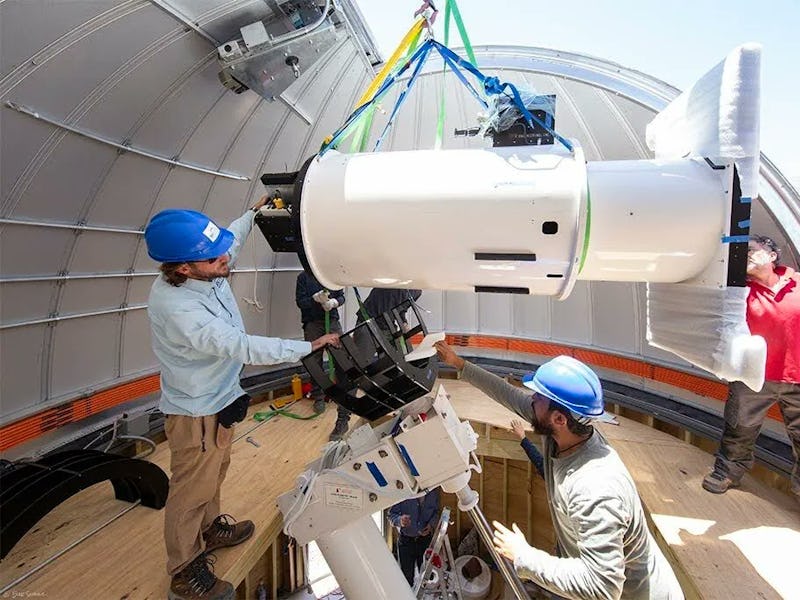NASA just doubled an effort to track dangerous asteroids — should you be worried?
Don’t look up!

According to Don’t Look Up!, dangerous asteroids can come from anywhere. So there was an obvious weakness in our asteroid defense system when only one of the hemispheres was covered by telescopes that constantly scan the sky. That was the case until recently — thanks to the expansion of the Asteroid Terrestrial-impact Last Alert System (ATLAS) system into the southern hemisphere.
ATLAS, funded by NASA and run by the University of Hawai’i, was originally just two telescopes set up on Haleakalā and Maunaloa, two separate parts of Hawai’i. After becoming fully operational in 2017, the system was able to scan the sky every 24 hours, barring any cloud cover, to watch for any potential moving asteroids. But from their vantage point, they could only scan half of the sky.
One of the telescopes being lifted into place in South Africa.
NASA funded two more telescopes in the southern hemisphere to rectify that problem — one located in South Africa and one in Chile. The one in South Africa was contracted to the South African Astronomical Observatory, while the Chilean telescope was supported by a public-private consortium that included the Millennium Institute for Astrophysics and Obstech, a company that runs a private observatory.
The Covid-19 pandemic slowed down the installation process and bungled up some supply chains, but recently both telescopes achieved first light. Importantly, they did so at different times of the day, allowing observes located in Hawai’i to remotely monitor the dark sky over South Africa and Chile during the daytime on their island.
ATLAS telescope located on Maui
Those observations have already been a success, with the South African observatory identifying its first Near-Earth Object on January 22. 2022 BK, as it is now known, is a 100-meter asteroid that poses no threat to Earth. However, asteroids of a similar size could potentially wipe out an entire region if they impact the planet. ATLAS would be capable of providing about three weeks warning of an asteroid large enough to cause such devastation. Even for smaller asteroids, such as a 20-meter asteroid that could wipe out a city, it was capable of providing at least 24 hours’ notice.
While that might not seem like a lot of time, it is the best system so far for providing such detections. However, it does work with other systems, such as Pan-STARRS and the Catalina Sky Survey, to fully understand what hazardous asteroids may be in the area. Humanity could use all the help it could get in that regard.
This article was originally published on Universe Today by Andy Tomaswick. Read the original article here.
This article was originally published on